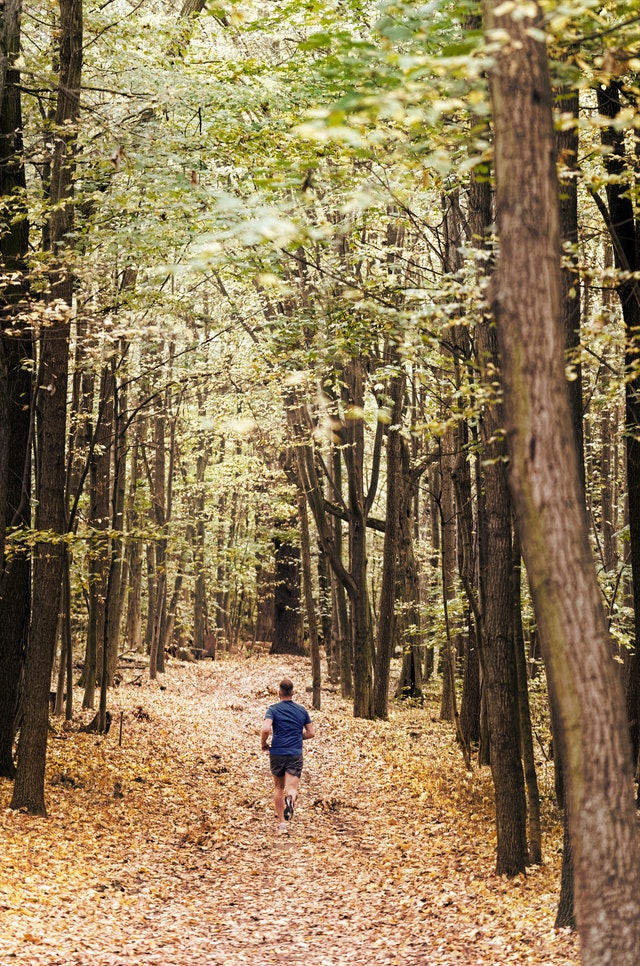This post may contain affiliate links. Please read the disclaimer for more information.
This past weekend, I was on a long hike through some hilly and uneven terrain. Towards the end of the hike, I remembered that when I used to run a lot, I had actually learned several little techniques for handling hills. What I was most curious about was how to go up hills more efficiently because it was so tiring.
While I was hiking, I noticed myself going back to my default patterns when I get tired. Some of these include taking very long strides and landing hard on the outstretched foot, bobbing my head and upper body forward when I landed, and not pumping my arms.
It is very common to have your form suffer as you get more fatigued, however, these poor techniques will fatigue you even quicker. This is mainly because they require a lot of energy for little output: inefficient, to be more clear.
So I had to work on correcting my form for the second half of this hike. If I continued letting it suffer, I would’ve been exhausted by the end. Luckily this time, I also had much better footwear for hiking as well and I’ll talk about why that matters throughout the article.
Here’s what I do to maintain my pace and energy levels while going uphill, and remember, this applies to whatever you’re doing whether it’s walking, hiking, or running.
Which Muscles to Use
The first thing to focus on is that you want to be using the muscles on the back of your legs (posterior chain), predominantly. The reason why is because they are not going to fatigue as quickly when going uphill as muscles on the front of your legs like the quads will.
So think about engaging the glutes, hamstrings, and even calves more because they are some of the strongest muscles in the body and they’re meant to shoulder most of the responsibility.
Posture
The next thing is to remain upright with your pelvis pushed slightly forward. This will keeping you from folding over the hill with your upper body. The last thing you want is to be leaning your head, neck, shoulders, and chest over the hill while trying to run up it.
Staying upright will keep the tension out of your upper body and help you to keep breathing well. To maintain this form, you’ll need to keep your glutes activated. Squeeze your glutes and you’ll notice that it pushes your pelvis forward slightly and propels you to start moving forward, perfect right?!
Again, the glutes should be taking most of the work here. They have the strength and are one of the most capable muscles for running uphill.
Address the Incline
Now that our body has the right posture and we’re ready to propel forward, it’s time to think about the incline of the hill. Many people, myself included, will lean over the hill with their upper body as a way to compensate for the incline. This is very inefficient and tiring.
Instead, we will make up for that incline by bending at the ankles. Not the back, hips, or knees, just the ankles alone. Your body is upright with the glutes and pelvis primed to move forward, you just need to balance yourself on that incline by bending at the ankles. Nearly all your weight should be on the balls of your feet (depending on how steep the incline is).
When more ankle mobility is needed, minimalist shoes make all the difference. The unique “zero-drop” sole ensures that the heel is level with the ball of your feet. Regular shoes come with an elevated heel whether you know it or not, and this robs us of our ankle mobility over time.
So for uphill running or hiking, minimalist shoes like the TerraFlex by Xero Shoes are a must. They will allow your ankles to bend a little further than normal shoes would, giving you better balance and improved control over the terrain.
High Knees
When you start moving, lift your knees up slightly higher than normal. It’s just like regular running, but slightly exaggerated because we’re going uphill.
When your foot comes down to land, dig into the ground and pull it back behind you as your push off again. Think of it as grabbing the ground like a claw with your feet and throwing it behind you to give yourself the hardest push off.
Lifting your knees up for a prolonged period can be tiring, so make sure to wear lightweight shoes like the Prio or Mesa Trail by Xero Shoes. They are some of the lightest outdoor trail footwear you can find at about 7.6 ounces on a men’s size 9 and they have the built-in traction to help you grab the ground and push off strong.
Stride Length
Keep your stride a bit shorter than usual. This is one I usually forget at first. I get tired and start making these long, heavy strides that force me to land flat-footed.
You need to take shorter strides to stay of the balls of your feet and keep yourself from tiring too quickly. This will help you maintain more control over the situation and complicate things less.
Use Your Arms
Lastly, pump your arms more than usual. Again, just like regular running but with a little exaggeration to make up for the incline. Don’t overdo it, but give yourself that extra momentum.
The arms don’t have any part on the ground, so they make up for that with the balance they provide and the extra “oomph” they give to make the leg muscles’ jobs a bit easier.
Apply these techniques one at a time until they feel natural to you and you can see why they are recommended. They apply to any form of movement, as long as you’re going uphill.


Leave a Reply